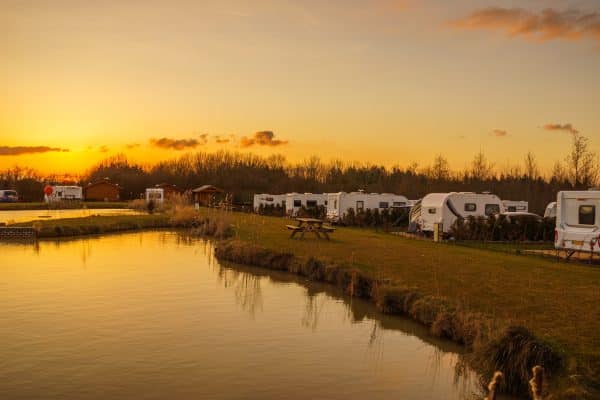News & Insights
Providing tailored insurance solutions for your business
Call our underwriting team on 0344 274 0276 or click here for further contact information.
Providing tailored insurance solutions for your business
Call our underwriting team on 0344 274 0276 or click here for further contact information.
As the season starts to wind down and the colder weather starts to settle in, we listed some handy hints and tips for Parks to review and consider during the autumn and winter periods.

From an insurance perspective, parks should ensure that their hire fleet and demonstration models are drained down in line with their insurer’s requirements and as per the manufacturer’s guidance.
Parks should also consider offering a drain-down service to their customers, to ensure that it is done correctly to avoid water or frost damage, but also because many customers find the procedure too difficult to carry out themselves (especially those that are elderly or disabled). At the very least, Parks should issue reminders to their customers of the need for their units to be drained down in line with their manufacturer’s guidelines if they are unable to offer a drain-down service. Drain-down should begin as soon as possible after units have been vacated and well in advance of the winter weather setting in.
All drain-downs carried out by the park or a third party employed by the park on behalf of a customer should follow the individual unit manufacturer’s guidelines.
Automatic drain-down systems are now readily available, and your private owners are at liberty to use these as they wish. However, the Compass policy wording, for example, notes that if the chosen drain-down process is not approved by the park, then a £250 excess will apply to any claims relating to the results of water freezing.
Parks should also issue a reminder to holiday caravan owners detailing the steps necessary for re-connection in the Spring. Where possible, parks should offer a reconnection service alongside a drain-down service.
When customers arrive back to the park after the winter months, they should be advised to check for signs of leaks, damp, mould etc, as well as signs of pest or vermin damage.
Remove all food and waste, or store anything that needs to be left in metal or glass containers with tight-fitting lids.
Do not leave any waste exposed around the park, tidy up outside areas, including underneath hire fleet and privately owned caravans if safely possible. Make sure piles of grass, weeds, leaves, or anything that could provide a warm nest are disposed of and cleared away. It’s important to keep all public areas clean.
Check for gaps in and/or damage to doors, window frames, vents, guttering, pipes, roofs, skylights, flooring and outdoor storage bins including signs of gnawing or holes from rats or mice.
Is there enough lighting around the park to be able to see and avoid hazards that might be on the ground? The easiest way to find out is to ask the staff and customers. Another way is to shadow your employees for a couple of days, walk the main internal and external routes that they use throughout their working day. If you can’t see hazards on the ground due to lighting issues, you will need to make some improvements to both the lighting and the hazard.
Fallen leaves that become wet or have started to decay can create slip risks in two ways, they hide any hazard that may be on the path or they themselves create a slip risk. We would suggest you put in place a procedure for removing leaves at regular intervals; you might even consider removing the offending bushes or trees altogether.
Rainwater can be dangerous, we suggest slip-resistant materials are used in public areas. Discourage people from taking shortcuts over grass or dirt which are likely to become slippery when wet. If needed, consider converting existing shortcuts into proper paths. Many slip accidents happen at building entrances as people entering the building walk in rainwater. Fitting canopies of a good size over building entrances and in the right position can help to prevent this. If a canopy is not a possibility, consider installing large, absorbent mats or even changing the entrance flooring to one which is non-slip. Finally, a good cleaning regime and regular maintenance is another great preventative measure, using warning signs to highlight any potential issues could also help.

Monitor the temperature during those cold days and nights, to reduce the risk of slips on ice, frost, or snow, you need to assess the risk and put in a system to manage it. You can do this by identifying the outdoor areas used by the public which are most likely to be affected by ice.
To prevent an icy surface forming and/or keep the public off the slippery surface you can do this by using grit, covering walkways and if needed creating diversions to less slippery walkways.
Gritting is the most common method used to de-ice floors its effective, cheap, quick to apply and easy to spread. Salt will stop ice forming and cause existing ice or snow to melt. You need to act whenever freezing temperatures are forecast.
Keep up to date by visiting a weather service site such as the Met Office or the Highways England.
Health and Safety Executive (HSE) offers guidance in relation to the Health & Safety and Risk Management.

Our Summer Newsletter is Finally Here! Read the full version of our Summer Compass Newsletter. In this issue, we give…
Read more
The first newsletter of 2024! We are excited and ready to see what the rest of 2024 has in store…
Read more
Compass Insurance has won the Feefo Platinum Trusted Service Award, an independent seal of excellence, which recognises businesses that consistently…
Read more
From everyone here at Compass, we would like to wish you, your family and friends a very Merry Christmas and…
Read more